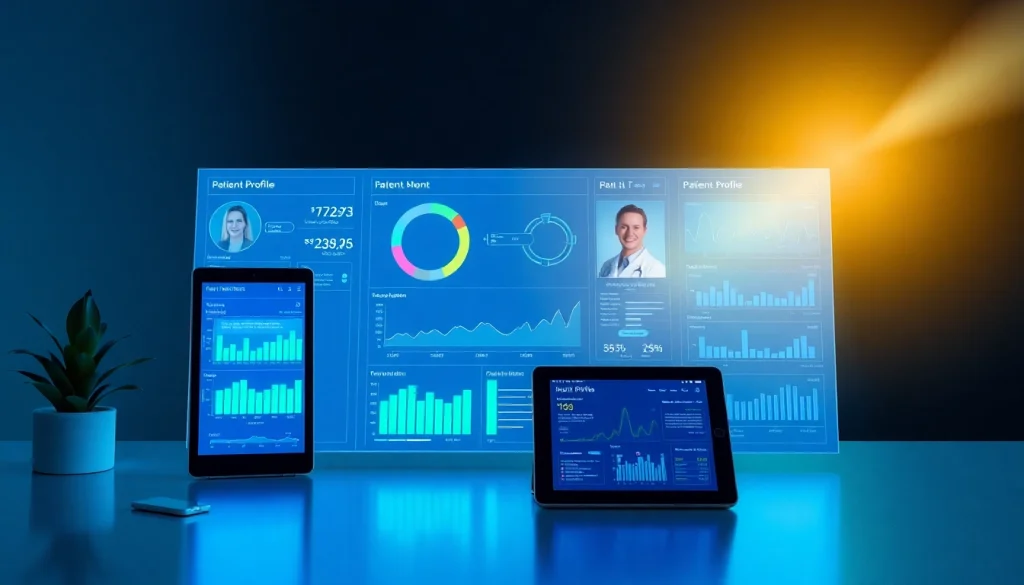Understanding Healthcare Informatics
Healthcare informatics is at the forefront of transforming the way healthcare services are delivered. At its core, it merges the fields of computer science, information science, and healthcare to enable better management of patient information and health records. The impact of informatics extends beyond storage and retrieval of data; it emphasizes the importance of data analytics in improving patient outcomes, streamlining healthcare processes, and enhancing the overall healthcare experience. With resources like www.informaticsview.com, professionals in the healthcare sector can gain insights into how to leverage these technologies effectively.
Definition and Importance of Informatics in Healthcare
Informatics in healthcare is defined as the systematic application of information and communication technology (ICT) to health-related data, aimed at optimizing patient care and improving health outcomes. As health data becomes increasingly complex and voluminous, the ability to analyze this data efficiently is crucial. Informatics not only allows for the effective management of electronic health records (EHRs) but also plays a key role in clinical decision-making, research, and public health management.
Its importance is underscored by its capability to facilitate evidence-based practices, drive optimal patient care, and inform healthcare policies. For instance, clinical informatics specialists are pivotal in harnessing data insights to improve patient management and treatment protocols, thereby elevating the standard of care.
The Role of Data in Improving Patient Outcomes
The cornerstone of healthcare informatics is data—its collection, analysis, and application are fundamental to improving patient outcomes. By utilizing advanced analytics, healthcare providers can identify trends and patterns that guide clinical decisions. For instance, predictive analytics can forecast patient admissions or the likelihood of readmission, allowing for proactive interventions.
Moreover, the integration of data from various sources, such as wearables and home monitoring devices, into EHRs facilitates a more comprehensive view of patient health. This holistic approach enables healthcare providers to personalize treatment plans, ultimately leading to improved outcomes and increased patient satisfaction.
Current Trends in Health Informatics
As technology continues to evolve, several trends are shaping the landscape of health informatics. One key trend is the shift towards value-based care, which emphasizes outcomes over the volume of services provided. This transition is driven by the need to enhance patient experiences while maintaining cost-effectiveness.
Another notable trend is the rise of telemedicine, accelerated by the COVID-19 pandemic. Telehealth solutions utilize informatics to provide remote consultations, which have proven vital for continuity of care when in-person visits are not feasible. Additionally, the integration of machine learning and AI into informatics systems is transforming data analysis, enabling healthcare providers to make more informed decisions rapidly.
Key Components of Informatic Systems
Electronic Health Records: A Central Element
Electronic health records (EHRs) represent a foundational component of health informatics systems. They provide a digital version of a patient’s paper chart and are designed to streamline the clinician’s workflow. EHRs allow for a complete view of patient health history, medications, lab results, and diagnostic reports, which enhances the accuracy and efficiency of patient care.
Furthermore, EHRs are pivotal in ensuring accessibility to patient data across various providers and care settings, facilitating coordinated care efforts. The interoperability of EHR systems enables the exchange of patient information among different healthcare entities, leading to improved treatment continuity.
Clinical Decision Support Systems and Their Impact
Clinical Decision Support Systems (CDSS) utilize health informatics to assist healthcare providers in making appropriate clinical decisions. These systems analyze data from various sources, including patient records, clinical guidelines, and medical literature, to provide evidence-based recommendations.
CDSS tools assist in diagnosing conditions, recommending treatments, and alerting providers to potential drug interactions or allergies, ultimately improving patient safety. Studies have shown that using CDSS can significantly enhance decision-making processes, leading to better clinical outcomes and reduced healthcare costs.
Data Security and Patient Privacy Concerns
While the advancements in health informatics have ushered in numerous benefits, they also pose critical challenges, particularly regarding data security and patient privacy. The sensitivity of health data makes it a prime target for cyberattacks, and thus, adopting robust cybersecurity measures is non-negotiable.
Healthcare organizations must prioritize protecting patient data to comply with regulations such as HIPAA and GDPR. Implementing encryption, access controls, and regular security audits can mitigate risks and build patient trust in electronic health systems.
Challenges in Implementing Informatics Solutions
Barriers to Adoption among Healthcare Providers
The integration of informatics solutions within healthcare settings faces several barriers. These include resistance to change from healthcare providers, lack of adequate training, and insufficient infrastructure. Many providers may be accustomed to traditional practices and may view new systems as disruptive.
To overcome these barriers, healthcare organizations need to involve stakeholders in the selection and implementation process, providing training programs that enhance user acceptance. Communication about the benefits of informatics—such as improved patient care and enhanced workflow efficiency—can help in reducing resistance.
Technological Limitations and Solutions
Technological limitations can hinder the effectiveness of health informatics solutions. Issues such as outdated software systems, lack of interoperability between platforms, and insufficient IT support can significantly impede optimal performance.
Addressing these limitations requires investing in modern technology and ensuring compatibility among different systems. Collaboration among technology vendors, healthcare providers, and regulatory bodies is essential to develop standards that promote interoperability across informatics platforms.
Training and Support for Healthcare Professionals
Effective implementation of informatics systems necessitates ongoing training and support for healthcare professionals. A lack of familiarity with new technology can lead to underutilization or misuse, ultimately affecting patient care quality.
Healthcare organizations should establish comprehensive training programs that not only introduce new software or systems but also focus on continuous education to keep staff updated on evolving technologies and best practices. Providing a dedicated support team can also help address concerns and issues as they arise.
Best Practices for Healthcare Informatics
Integrating Technologies Seamlessly
Seamless integration of informatics technologies is crucial for maximizing their efficacy. This entails developing workflows that accommodate the use of informatics tools within the daily routines of healthcare providers.
To achieve effective integration, organizations should adopt an iterative approach to implement informatics solutions. Conducting pilot testing allows for the identification of potential hurdles and adjustments before a full-scale rollout, minimizing disruption to clinical workflows.
Measuring Success and Patient Feedback
Measuring the impact of informatics initiatives on patient care is essential for continuous improvement. Organizations must establish key performance indicators (KPIs) related to patient outcomes, satisfaction levels, and clinician efficiency.
Furthermore, facilitating mechanisms for gathering patient feedback can provide invaluable insights into the effectiveness of informatics systems. Surveys, focus groups, and one-on-one interviews can help gauge patient satisfaction and highlight areas in need of enhancement.
Continuous Improvement in Informatics Practices
The field of health informatics is rapidly evolving; therefore, ongoing evaluation and refinement of implementation practices are vital. Organizations should foster a culture of continuous improvement, where feedback from both patients and healthcare professionals is utilized to enhance systems and processes.
Regularly updating training programs, reviewing technological advancements, and involving staff in discussions about workflow improvements can contribute to a more adaptive and responsive informatics system.
The Future of Healthcare Informatics
Emerging Technologies and Innovations
The future of healthcare informatics looks bright, with numerous emerging technologies poised to revolutionize the field. Innovations such as blockchain technology have the potential to enhance data security and patient ownership of information, while advancements in big data analytics can offer deeper insights into population health trends.
Furthermore, the rise of mobile health (mHealth) applications enables patients to engage actively in their own care, leveraging their data for monitoring and decision-making, which positions them at the center of the healthcare experience.
The Role of AI in Health Informatics
Artificial Intelligence (AI) is set to play an increasingly pivotal role in healthcare informatics. From predictive analytics that forecast disease outbreaks to intelligent chatbots that facilitate patient interactions, the applications of AI are vast and varied.
AI technologies can automate routine tasks, analyze complex datasets for trends, and assist clinicians in making data-driven decisions, thereby improving efficiency and outcomes in patient care. The continuous development of AI tools must be accompanied by ethical considerations and regulatory guidance to ensure safe and responsible use.
Preparing for Future Challenges in Healthcare
As healthcare informatics continues to evolve, organizations must remain agile and prepare for future challenges. This includes staying ahead of cybersecurity threats, adapting to regulatory changes, and addressing the digital divide that may affect access to technology in underserved populations.
Investing in adaptive technologies, robust training programs, and fostering a culture of innovation will empower healthcare providers to respond effectively to future needs. Collaboration among stakeholders—from healthcare providers to technology developers—will be crucial in navigating the complexities of healthcare in a digital age.





